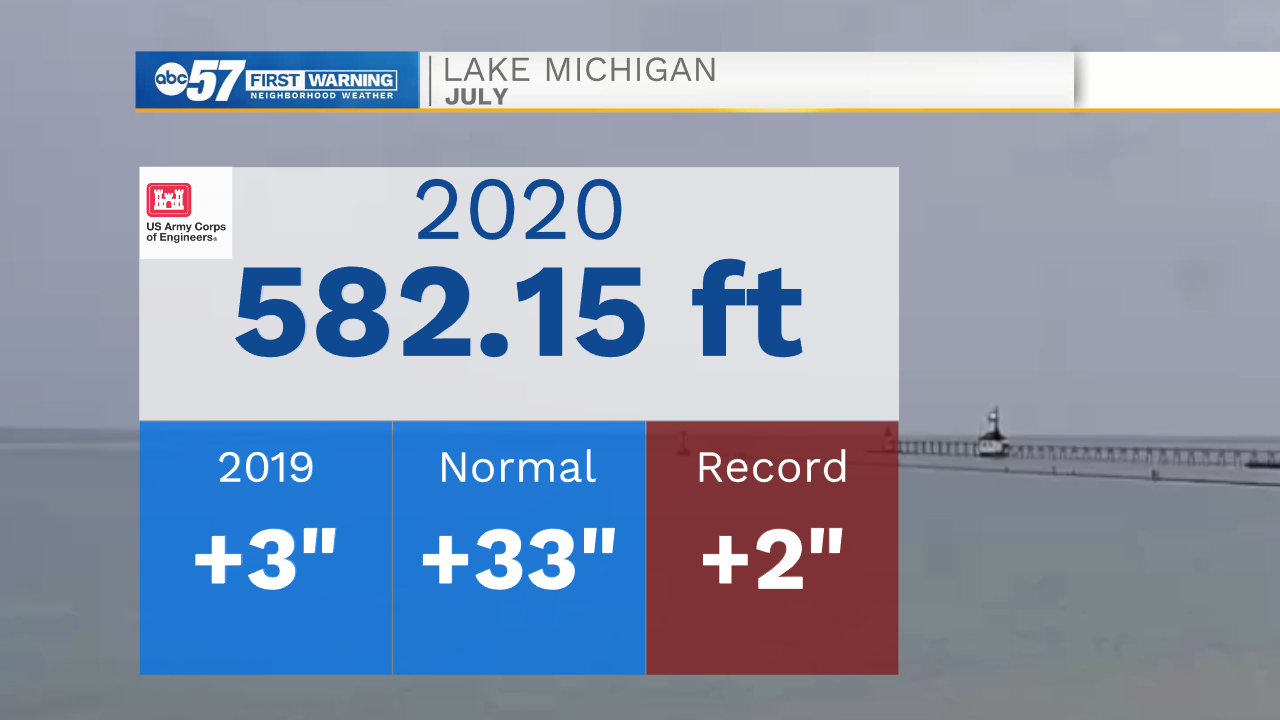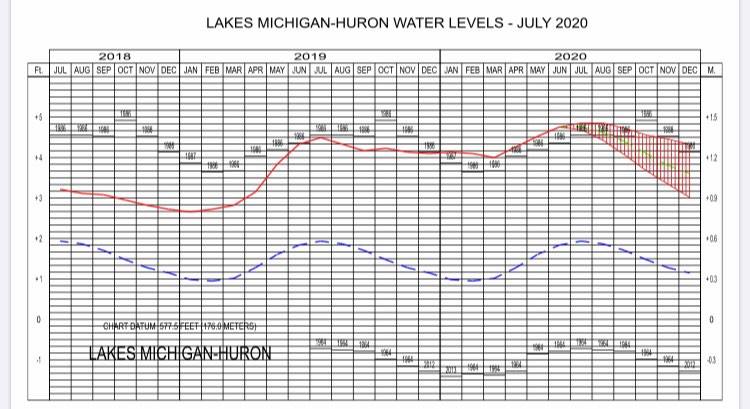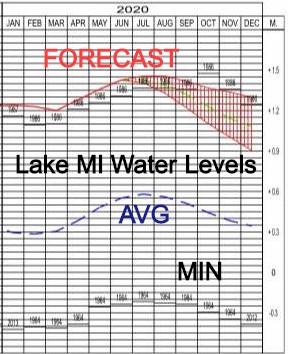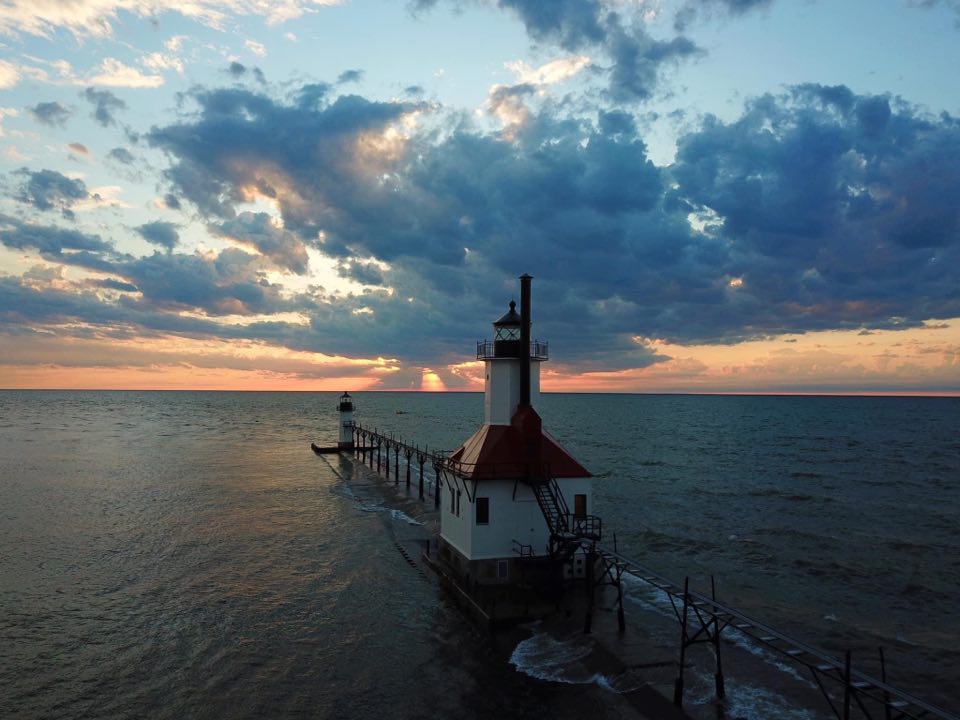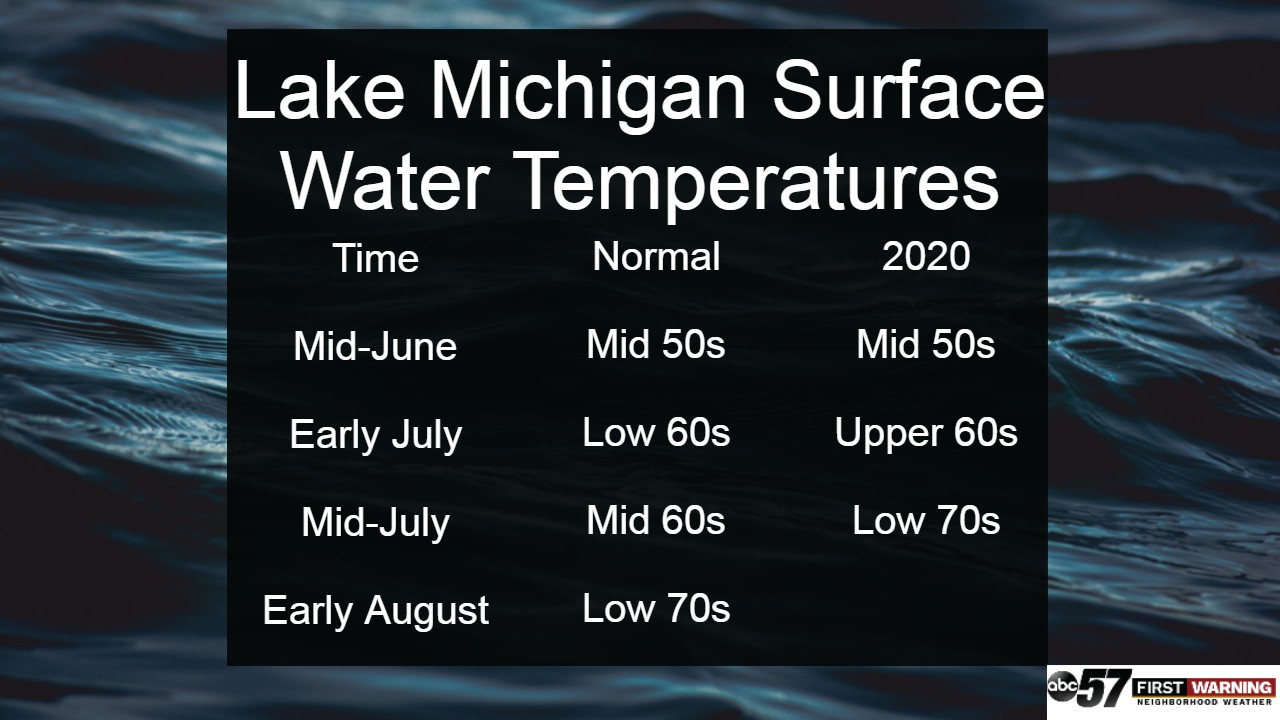July update on Lake Michigan: record setting water levels and temperatures
As you head to Lake Michigan for a relaxing beach day this summer, you may notice higher than normal water levels and temperatures warmer than normal for July.
Lake Michigan water levels have been at an all-time high throughout 2020. These high water levels create shoreline erosion, which can deplete beaches.
At the start of July, this was no different. The official water level was 582.15 feet. This level was three inches higher than this time in 2019. This is also 33 inches above the normal water level for the middle of the summer. This means water level is nearly three feet above normal. This did set a record, beating the previous high water level for the month by two inches.
Water levels start to recede after the summer months. While the water level is forecast to go down starting in August, it will not go down far enough to get anywhere near normal levels. This data from U.S. Army Corps of Engineers shows water levels predicted above normal at least through the end of the year.
The high water levels are very evident at the pier at Silver Beach. This year, water levels are even with, or sometimes cover, the pier. In the past, the pier has been higher than the water.
Additionally, water has gotten warmer earlier than normal at Lake Michigan. You might remember swimming around the 4th of July holiday. Water temperatures felt comfortable then, and have stayed warm through most of July.
It isn't unusual that we see surface water temperatures in the mid to upper 70s-- it is unusual that the water is this warm this early. Typically we don't see temperatures in the low to mid 70s until August.
This happened this year because we had a string of hot, 90 degree days in a row. When it is warm for only one or two days, it briefly warms the water on the surface of the lake. As this water mixes with the cooler, lower layers of water, eventually we lose the heat. If the air warms for several days, however, the surface is able to heat up more consistently. As it mixes with the lower layers, eventually, all layers warm. This is how the lake heats up each year.
If you are headed for a swim, and you expect refreshingly cool temperatures, you might be disappointed with these warmer than normal temperatures.















